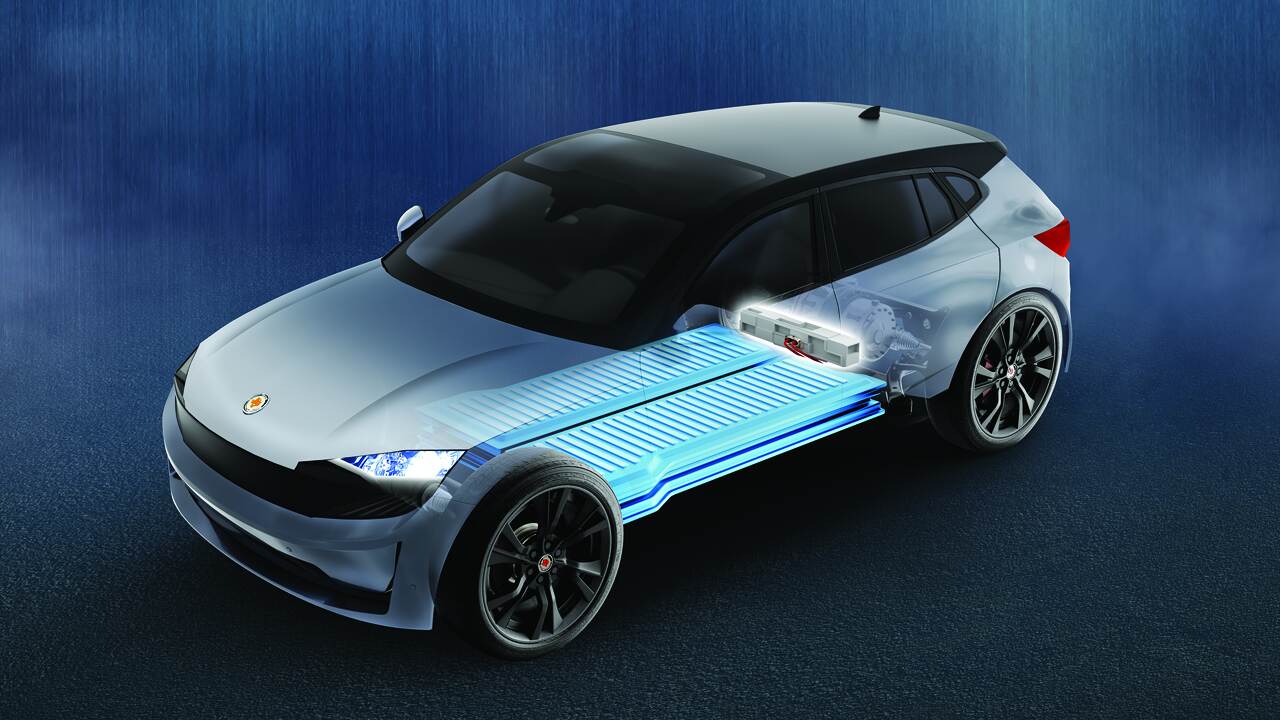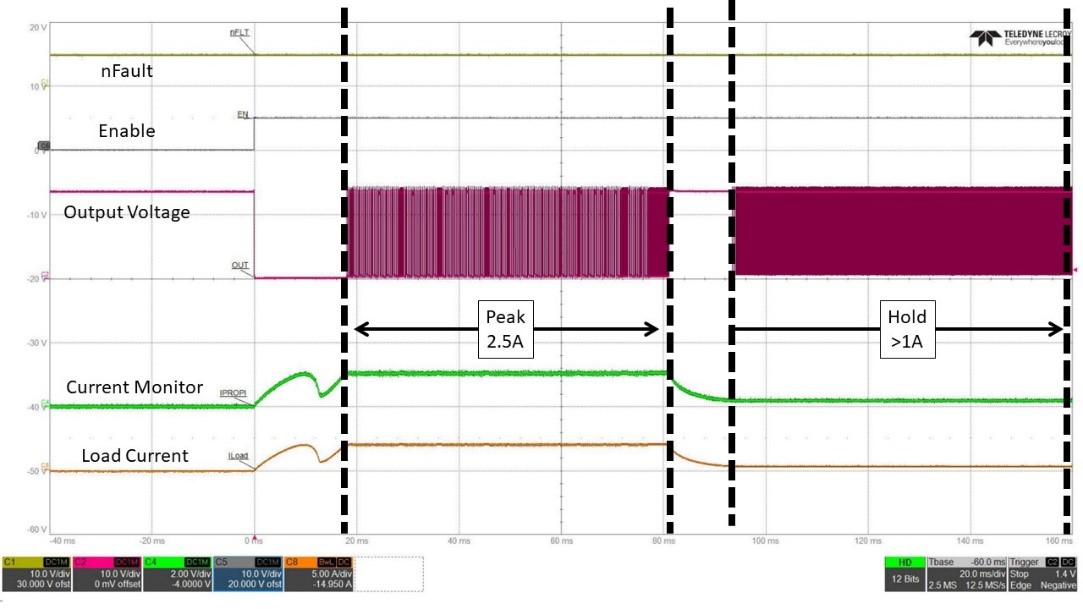SSZTCU8 January 2024 DRV3901-Q1 , DRV3946-Q1

Power distribution in battery management systems (BMS) for hybrid electric vehicles (HEV) and electric vehicles (EV) delivers power to core functions of the vehicle while also providing mechanisms to safely disconnect high voltage or high current events. Two core components of the power distribution system, high voltage relays and disconnect fuses, face increasing design challenges from the growing demands of supporting higher voltages, currents, efficiency, and reliability. Figure 1 shows an overview of the high voltage relays and disconnect fuses.
 Figure 1 Battery disconnect fuse and
high voltage relays in BMS power distribution
Figure 1 Battery disconnect fuse and
high voltage relays in BMS power distributionThe non-resettable, battery disconnect fuse activates in emergency scenarios to break the connection between the battery and rest of the car. High voltage relays, otherwise know as contactors, connect and disconnect power-supply lines throughout an HEV or EV during normal operation. In this article, I’ll discuss emerging technologies in contactor and disconnect fuse drivers that are helping make BMS smarter, safer and more efficient.
Enabling a fast and reliable battery disconnect system
In the event of a collision, power needs to be shut off from downstream systems in order to prevent further complications or damage. The two common solutions today are melting fuses and pyro fuses. Melting fuses trigger based on thermal conditions of an overcurrent event and these fuses come pre-set from the factory. Pyro-fuses require an electronic driver to send a signal to break the connection and are primarily driven by discrete circuits or legacy airbag squib drivers. As HEV and EV systems move toward higher power, pyro-fuses offer higher reliability and faster deployment. But common solutions for driving these pyro-fuses quickly become complex when working to achieve fast reaction times. The need to meet International Organization for Standardization (ISO) requirements, ISO26262, adds increasing complexity to these designs.
In order to achieve a faster response time, the DRV3901-Q1 pyro-fuse driver implements a direct 2-pin hardware interface that can bypass the serial parallel interface (SPI). The DRV3901-Q1 driver has the ability to pair with a voltage, current and resistance (UIR) sensor for an even faster deployment. A UIR sensor, like the BQ79631-Q1 device, can communicate directly to the DRV3901-Q1 driver through the hardware pins, removing the need for an MCU.
One of the most critical functions for the pyro-fuse is disconnecting the battery from the rest of the system in the event of a crash or other critical failure. System designers must ensure the pyro-fuse function is available to activate reliably. DRV3901-Q1’s built-in diagnostics monitor the driver status, pyro-fuse health and back-up power availability. To monitor the back-up power supply availability, the reservoir capacitor is measured. This capacitor acts as a back up power source for the pyro-fuse system in the case where the main supply from the battery is no longer available. By periodically checking the discharge voltage of this capacitor, it enables the DRV3901-Q1 driver and the MCU to detect a failure of this back-up power supply before its needed and alert the vehicle.
It is important for the fuse to deploy when needs to, but it is also just as important that the fuse doesn’t misfire. The DRV3901-Q1 driver has integrated safety diagnostics to prevent unintentional pyro-fuse deployment. This is achieved through different functions, including separate high side and low side drivers, redundant pins for the direct hardware firing and cyclic redundancy checking (CRC) protection on the serial peripheral interface.
Improving power distribution throughout the vehicle
The most common connections in the power-supply lines of an HEV or EV are the main contactors that connect the high voltage battery system to the traction inverter. There can be other power rails present, such as AC/DC charge contactors that are the connection from a charging station to the battery and auxiliary contactors that connect other electric loads such as interior lights or heaters.
A contactor is a low voltage solenoid that controls a mechanical relay switch capable of delivering high current at high voltage. Contactors in HEV and EV vehicles are evolving in order to handle higher power systems. The low voltage solenoid element of the contactor is often driven by a control circuit, called an economizer. The economizer circuit has become increasingly important and complex to achieve higher requirements for efficiency, reliability, and safety and to help improve the power efficiency in high-power conditions. These circuits help reduce the current consumption needed to keep the contactor closed. This economizer can either be integrated directly into the contactor or be an externally added. Contactors that require an external economizer can quickly become complex when trying to achieve system level safety goals.
A fully integrated high-power contactor driver, like the DRV3946-Q1 driver, can replace complex economizer designs. The DRV3946-Q1 driver enables an efficient turn-on and a safe turn-off of the contactor. To achieve a more efficient turn-on, the DRV3946-Q1 driver has a programable peak and hold current control. Figure 2 shows this feature working in action. More current can be supplied during start-up to make the initial connection. After the connection has been made, the current can be reduced to a lower level in the “hold” phase. The ability to program the integrated peak and hold phases provides a more robust and efficient turn of the contactor.
 Figure 2 Peak and Hold Current Control
in the DRV3946-Q1
Figure 2 Peak and Hold Current Control
in the DRV3946-Q1Turning the contactor off is also critical; having the ability to quickly disconnect a contactor helps to prevent contact welding and provides a first line of defense to the rest of the vehicle systems when something goes wrong. Common solutions for implementing peak and hold current control with quick discharge capability leads to complex circuits. The DRV3946-Q1 driver combines these two functions into a single chip to help reduce system complexity, improve efficiency and safety.
Conclusion
Improving the efficiency and reliability of the contactor helps increase the drivable mileage and enhances safety in the everyday operation of HEVs and EVs. Integrating the pyro-fuse driver into a single-chip solution facilitates smarter and faster decisions on when to break the battery connection. The DRV3901-Q1 pyro-fuse driver and DRV3946-Q1 contactor driver offer system designers options to engineer smarter, safer vehicles.